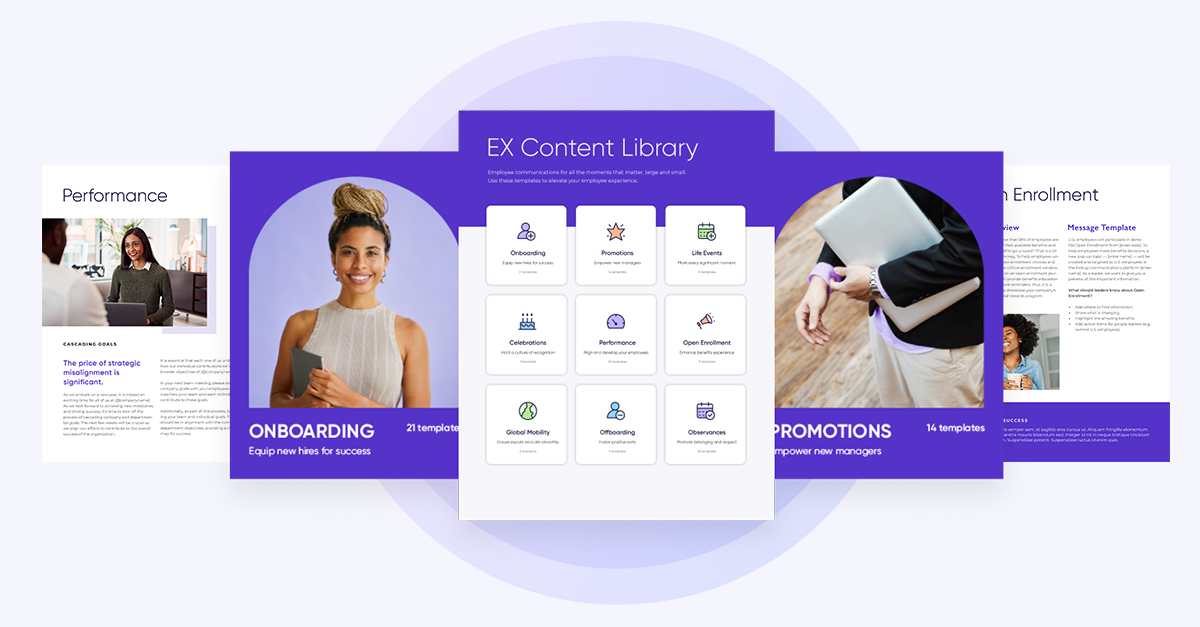These days, employees can be safely assumed to have their phones on them at all times. Laptops, if they even have one, may be left at home or at the office, but a smartphone is going to be the best way to get in front of them. Internet usage as a whole is on the verge of being dominated by smartphones. As a communicator, that means that every time you forgo utilizing employee communications apps on mobile devices as a part of your strategy, you’re throwing your resources in with a declining trend and forcing your employees to change habits. Your time and budgets aren’t endless — so why not use them to take advantage of a growing opportunity?
Last November, a milestone was reached: mobile internet usage surpassed desktop for the first time in history. That month, 51.3% of all web visits came from mobile devices compared to 48.7% of visits from traditional computing platforms, data from StatCounter, an independent web analytics company, show. While this trend has been in the making for almost a decade, it carries enormous implications for communicators. But what does it mean? And how can communicators use it to their best advantage?
1. First and foremost, it means communicators need to center mobile in crafting their communications strategies, starting now.
If your employee communications already work on sites accessible from their phones, you’re starting out in good shape — but linking out to sites not optimized for mobile still poses a risk of missed messages and a frustrating user experience. Establishing a mobile-first strategy is the best way to minimize disengagement and optimize employee attention.
2. You are constantly fighting for your employees’ attention.
If they have to wait to get to the office to log into their portal, you decrease the likelihood of engagement and cede employee mindshare to time-wasting external outlets. With a mobile employee communication strategy, you can fight for employee attention where it currently lives.
3. For global organizations with a large, dispersed footprint, mobile is likely to be even more of a dominant platform.
Given uneven internet access in emerging markets, mobile devices remain the primary point of internet access for most individuals, StatCounter data show. What’s more, many employees have jobs that take them on the road, or into the plant for hours, days, or weeks at a time. If you’re not delivering information to these employees where they can access it, you’re writing off whole divisions of your organization.
4. Some communicators may balk at imposing new methods of accessing content on employees.
A frequent worry is that Baby Boomers may not feel comfortable adopting new platforms. While certainly an important consideration to keep in mind, it’s helpful to remember that smartphones are now approaching their second decade of wide adoption and that before them, PDAs and beepers were the norms. Older employees can be just as tech-savvy as the millennial intern in your department.
5. Mobile strategies should be multi-faceted.
Not every employee will be using the same system or platform, so it’s smart to meet them wherever they are. Prioritizing communications that work across multiple platforms is key—and can help you achieve greater clarity and concision, too. This might mean whittling down your long emails into a message that can fit in a tweet or a mobile notification, or that you need to be coordinating copy across email, desktop and mobile to be sure the message comes across clearly in each.
As media trends toward short, snackable content, communications teams can’t afford to fall behind. The above strategies are simply starting points, but they are simple enough to incorporate into already existing practices. By meeting your employees where they’re already spending the bulk of their online time, you’re saving effort for yourself and for them to get your message across. Why not give it a try? Chat with a SocialChorus team member today to learn more.





